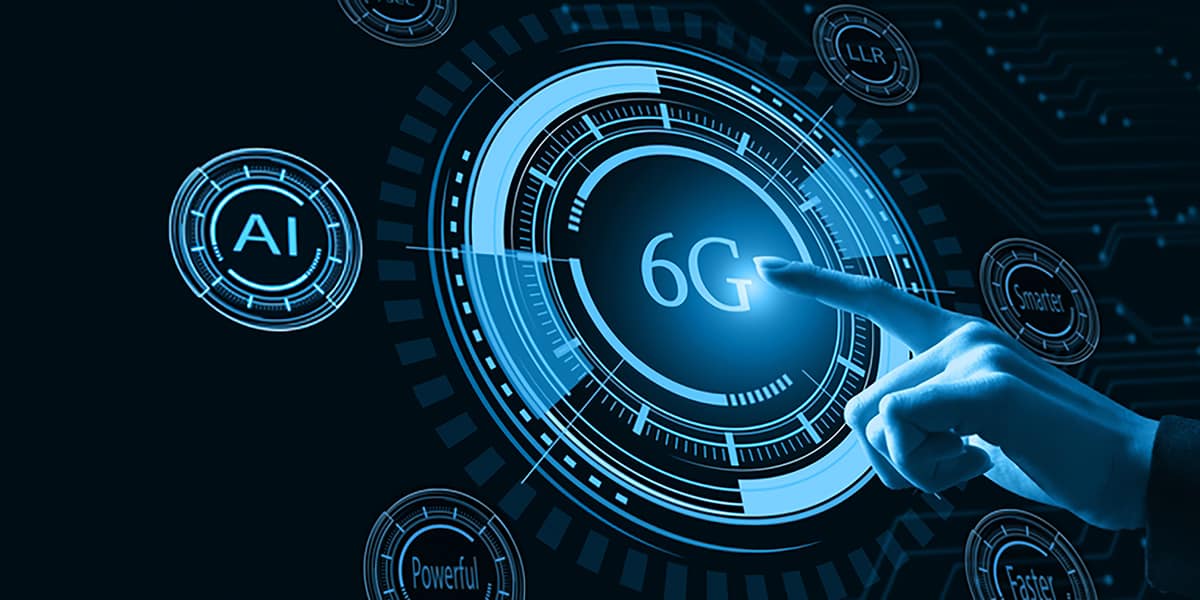Artificial intelligence (AI) is set to play a central role in the future of 6G networks. Unlike previous generations of wireless technology, 6G will have built-in AI capabilities, allowing it to manage itself more efficiently. AI will optimize network performance, enhance security, and enable new applications in real time. This article explores how AI will transform 6G and redefine wireless connectivity.
AI-Driven Network Optimization
One of the biggest advantages of AI in 6G is network optimization. Current networks require manual adjustments, but AI-powered 6G will be self-learning and self-optimizing. It will:
- Analyze network traffic in real time and automatically allocate resources where needed.
- Predict demand spikes and adjust bandwidth to avoid congestion.
- Identify and fix issues before they affect users.
AI will ensure stable, high-speed connectivity, even in high-traffic areas or during peak usage times.
AI and Ultra-Low Latency
6G is expected to have latency as low as 0.1 milliseconds. AI will play a key role in achieving this by optimizing data routing and prioritizing time-sensitive applications. This will be critical for:
- Autonomous vehicles that rely on instant decision-making.
- Remote surgeries, where every millisecond matters.
- Industrial automation, where AI-driven robots require real-time coordination.
By reducing latency, AI will enable seamless and ultra-fast wireless experiences.
AI-Enhanced Security in 6G
With billions of devices connected to 6G, security is a major concern. AI will help protect networks by:
- Detecting cyber threats in real time.
- Preventing unauthorized access through AI-driven authentication.
- Identifying fraud by analyzing unusual activity patterns.
AI-powered security will make 6G networks more resilient against hacking and data breaches.
AI in Smart Cities and IoT
6G will power smart cities by enabling instant communication between billions of IoT devices. AI will manage these devices efficiently, leading to:
- Intelligent traffic control that reduces congestion.
- Smart energy grids that optimize power distribution.
- Real-time environmental monitoring to improve sustainability.
With AI, 6G will create smarter, more efficient urban environments.
AI and Personalized Connectivity
6G will provide personalized network experiences based on user behavior. AI will analyze how people use their devices and adjust network settings accordingly. For example:
- Gamers will get ultra-low latency connections.
- Remote workers will get prioritized bandwidth for video calls.
- Streaming services will optimize video quality based on real-time network conditions.
AI will ensure that every user gets the best possible experience based on their needs.
AI-Powered Edge Computing
6G will rely heavily on edge computing, which processes data closer to the user instead of sending it to centralized servers. AI will enhance edge computing by:
- Reducing latency by processing data locally.
- Improving device performance by offloading complex tasks to edge servers.
- Enhancing privacy by minimizing data transfers.
This will enable faster, more efficient, and secure applications for businesses and consumers.
Challenges of AI in 6G
While AI offers many benefits, it also presents challenges:
- Data Privacy – AI-driven networks require massive amounts of data, raising concerns about privacy and data protection.
- Computational Power – AI processing requires advanced hardware, increasing energy consumption.
- Bias in AI Models – AI algorithms must be carefully designed to avoid bias and ensure fair decision-making.
Addressing these challenges will be crucial for the success of AI-driven 6G networks.
Conclusion
AI will be a core component of 6G, enabling self-optimizing, secure, and intelligent networks. It will enhance connectivity, improve security, and power smart cities. While challenges exist, AI-driven 6G will unlock new possibilities for industries and consumers alike. As we move closer to 2030, AI will shape the future of wireless communication like never before.
